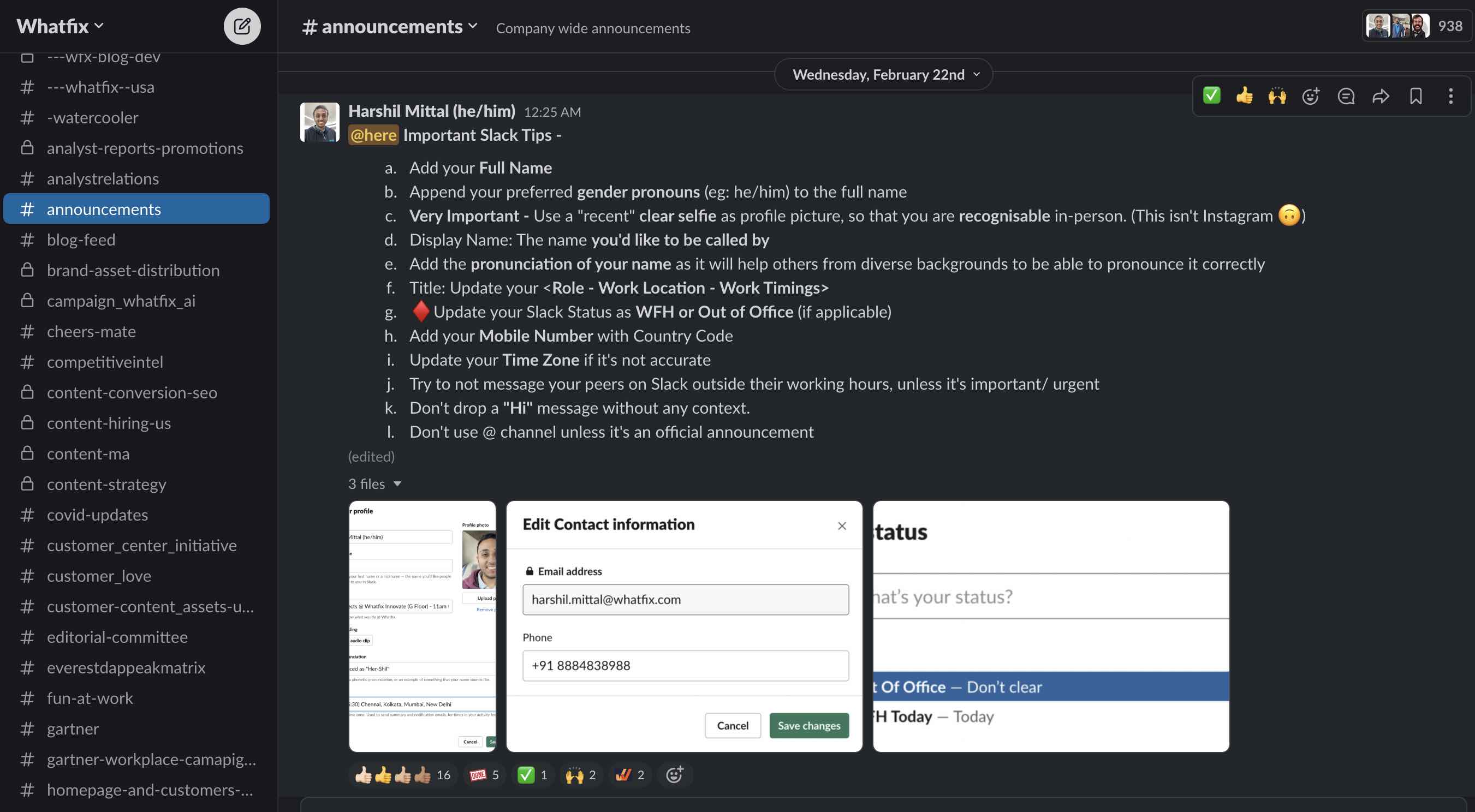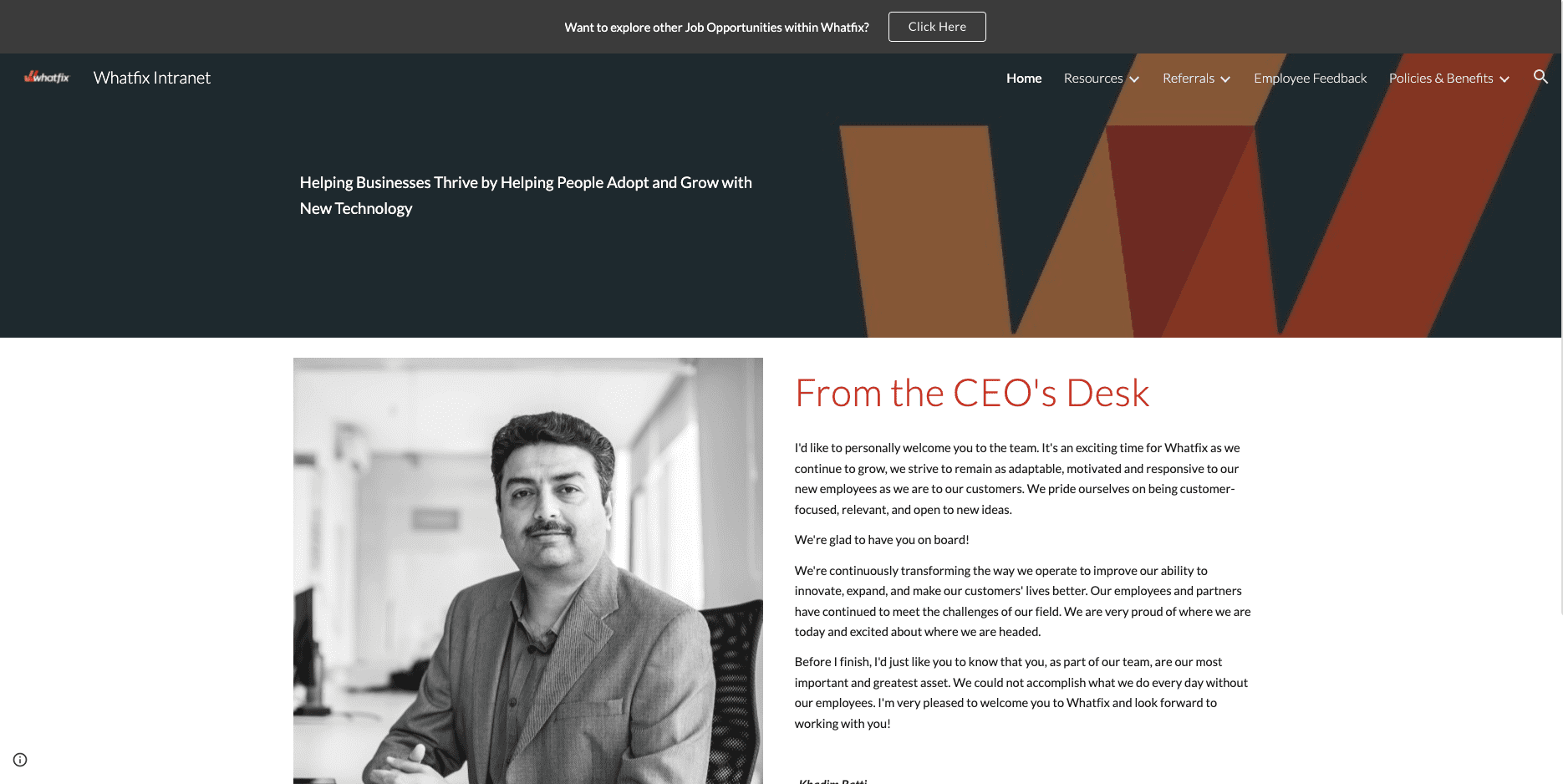
HR communication is the main channel through which businesses disseminate essential information to employees, from upcoming learning and development initiatives to performance reviews, company news, change announcements, and more.
Improving HR communication is critical to building rapport with team members, helping them understand and embody the mission and strategies of the business, and promoting overall positive employee experiences.
In this article, we’ll discuss the importance of having an HR communication strategy, explore effective mediums for HR-related communication and announcements, and provide tips for improving HR communication in your workplace
What's Is an HR Communication Strategy Important?
There are plenty of reasons HR communication is vital to an organization’s success, but they all boil down to a focus on culture and positive employee experience. An effective HR communication strategy helps enterprises link HR announcements and communication to overall corporate strategy and operations.
With a formal HR company communication strategy, organizations can:
1. Build trust with employees
Effective communication between HR and employees is essential to building an authentic connection. Lay the groundwork with consistent messaging, an emphasis on empathy, and a premium on authenticity. This way, employees will understand how they fit into the business’ vision and become proud ambassadors of your organization.
2. Keep employees connected
When HR keeps everyone in the loop, employees feel more connected to each other and to their work. Keeping employees engaged improves productivity as well as retention. According to a 2017 Gallup poll, highly engaged businesses achieve a 14% difference in productivity and a 43% difference in turnover.
3. Help define performance goals and expectations
Employees perform better when they have access to the information and tools they need. HR can help provide that information to team members by clearly communicating performance goals and expectations.
4. Boost workplace morale
Employees spend a large proportion of their time at work, so it’s important for them to enjoy their working hours to feel motivated and productive. HR can contribute to a positive culture and employee experience by soliciting regular feedback and putting it into action, acknowledging accomplishments, and finding frequent opportunities for employee engagement.
5. Establish a consistent internal brand
With an HR communication strategy, organizations can establish an internal brand and voice that employees recognize. It also provides a framework how when and how HR teams make internal announcements and communicate company news. This also helps tie in company culture, mission, and values throughout its org-wide communications.
6. Reduce internal conflicts
By keeping employees abreast of important company events and initiatives in addition to their own progress, HR can use communications to eliminate the potential for conflict between team members.
7. Improve processes and adoption of changes
With a comprehensive company HR communication strategy, organizations can improve their process adherence and improve change adoption rates by properly announcing important news, process changes, new technology implementations, company goals, and more.
What Channels & Mediums Should HR Teams Use for Corporate Communication?
With the move to the digital workplace, HR teams are now empowered with multiple channels to reach their employees – and should utilize their company’s most popular communication mediums to disseminate information and make announcements.
When used effectively, these channels help foster open communication and transparency within an organization. They can be used separately or in combination, depending on the type of message, audience, and urgency of the information.
Here are four of the most common company communication channels and networks for HR teams to make organization-wide announcements:
1. Email
Email is perhaps the most common way for HR to disseminate information – and the oldest (at least in the post-Internet era.) Everyone has access to email, it’s easy to draft and send messages, and it’s easy to track who’s opened and read the announcement.
Depending on the size of your organization and the nature of the information, you can personalize the emails or segment them based on different departments or teams. Emails can also include attachments, links, and other resources for further reading on company-related announcements.
If your company has a recurring email newsletter, this can also be an excellent medium for HR announcements. HR can dedicate a section of the newsletter for their updates. This method can be combined with other company news, updates, and highlights, providing a holistic view of what’s happening within the organization.
2. Company intranet or HCM
An intranet portal is an internal network that is only accessible to your organization’s employees. Here, HR can post announcements, policies, updates, and more. Some HCM platforms include intranet-style communication capabilities like a news feed or announcements area where HR teams can post updates. The advantage of this method is that it’s centralized and accessible to everyone within the organization. It’s also a great way to store historical data that employees can be referred to at any time.
Below you can see an example of an intranet portal feed.

3. Team collaboration tools like Slack and MS Teams
Company collaboration and messaging apps like Slack, Microsoft Teams, or Google Workspace are excellent platforms for HR to make announcements and tag team members and departments that are impacted the most by an announcement. These platforms often have dedicated channels that include everyone in the organization (or everyone on a specific team for department-related news) where HR can post updates, and employees can comment, ask questions, or discuss the announcement in real-time.
Below you can see an example from our internal #announcements channel here at Whatfix.

4. All hands and town hall meetings
All-hands meetings and town halls are face-to-face or virtual meetings where company leaders deliver organization-wide messages and updates. The advantage of these meetings is that they allow for a two-way communication process, and employees can ask questions or provide feedback during the session (many companies use anonymous feedback submission tools!) Town halls and webinars are more engaging and personal than written communication and help provide a medium to bring everyone in the company together to drive engagement and company culture.
10 Tips To Improve HR Communication In The Workplace
HR should develop a communications plan to maximize the impact on the overall success of the business. Here are some helpful tips to use to increase the effectiveness of HR communications.
1. Prioritize communication during the onboarding process
HR should use the onboarding process to set clear objectives and make sure that every new-hire is well-versed in company operations and the requirements of their position. Establishing clear communication channels for new hires at an early stage is critical for them to reach out to managers and touchpoints in other departments.
Extra points for providing a welcome package that makes new employees feel appreciated and helps show them what the company is all about.
2. Align your communication strategy with organizational goals
A common goal helps everybody feel empowered. Align employees’ roles they are well suited for and keep goals aligned with targets relevant to their success. Set a clear pathway to success for your team members within the context of overall success for the business to keep teams on track.
3. Obtain and act on employee feedback
Communication works both ways. HR should open up avenues for employees to feel comfortable providing feedback and input and refer to these channels regularly. Showing that the HR team is open to feedback and act on it helps promote trust between employees and the organization and empowers HR teams to improve the experience for everyone at the company.
4. Use surveys
Making use of surveys at important career landmarks and after rollouts of new initiatives help HR teams work with employees to improve culture and business outcomes. These surveys can be anonymous to make employees comfortable providing honest feedback. HR should use data from these surveys to plan future initiatives and improve employee experience.
5. Make internal documents easily accessible
HR teams maintain all the information employees need to do their jobs and manage their benefits, pay, and time off. One huge way to improve employee experience and communication is to make much of this information easy for team members to access and update as needed without having to submit a request. Organizations should invest in employee self-service tools and create a branded internet portal.

Above: Example of Whatfix’s internal intranet portal for company announcements and news.
6. Use social media
HR teams can build on internal messaging by using social media in an approachable and authentic way. Share bespoke educational content, community engagement initiatives, behind-the-scenes snaps, and exciting employee milestones to highlight all the things that make your organization unique.
Encourage team members to engage with company content and share positive posts about your org to their own accounts. If your organization is providing positive employee experiences and a healthy working environment, these posts will let your company culture shine.
7. Build an all-in-one communication system
HR can facilitate communications by using a singular HR Platform to disseminate information and house employee documents. This system must allow team members to access announcements, contact information, and company documents without irritating barriers.
8. Identify internal champions
Communications don’t have to be all about the grind. HR can show team members that their contributions are noticed, appreciated, and valued by identifying internal champions. Finding ways to showcase the efforts of team members who represent the company’s overall vision can empower them and encourage others to reach their own goals.
9. Focus on company culture
All HR communications should be aligned with company culture and emphasize the importance of promoting a positive workplace environment. Keeping this messaging consistent will help reinforce in-person initiatives and constantly improve employee experience.
10. Connect employees for collaboration and teamwork
Providing clear paths for communication across the organization makes teamwork a breeze and helps employees feel more confident reaching out to one another for collaboration. Using communications to highlight employee successes breaks down barriers between groups and helps employees get to know one another better, even if they rarely get to collaborate on projects.
It can be a big project to tackle, but considering all the benefits of effective HR communications, developing a comprehensive HR communication strategy is well worth the effort.
Additionally, consider implementing a digital adoption platform like Whatfix to supercharge your HR digital transformation efforts with a simple interface bridging users and technology. DAPs enable you to resolve all complex people-related transformation issues, elevate employee experience, increase HCM application adoption, and improve employee productivity.
Schedule a free demo with us if you wish to unlock the full potential of your workforce with Whatfix.

Thank you for subscribing!



